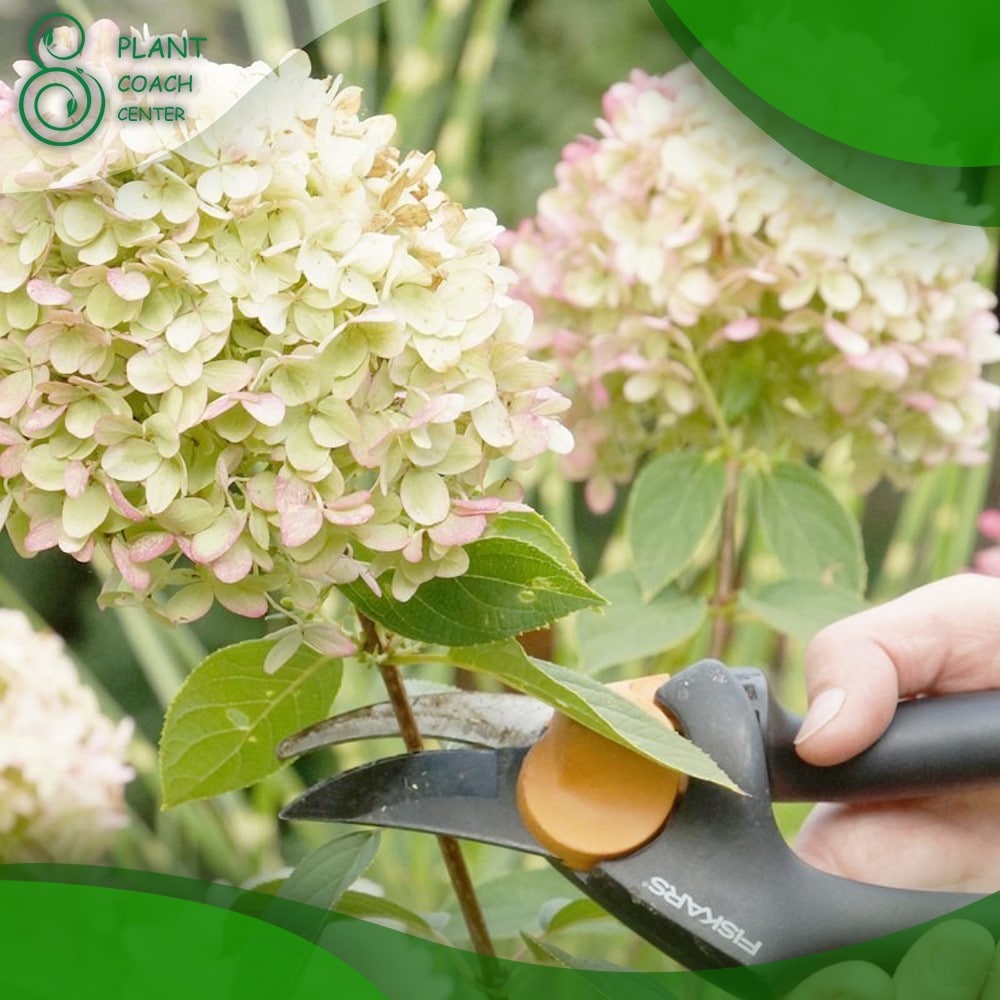Introduction to When to Prune Limelight Hydrangea
PlantCoachCenter welcomes you to our comprehensive guide on “When to Prune Limelight Hydrangea.” In this article, we will explore the art of plant coaching, focusing specifically on the timing and techniques for pruning Limelight Hydrangeas.
Whether you’re a seasoned gardener or a beginner, understanding the best practices for hydrangea pruning will help you achieve healthy, vibrant plants with abundant blooms. So let’s delve into the world of Limelight Hydrangeas and discover the secrets to successful pruning.
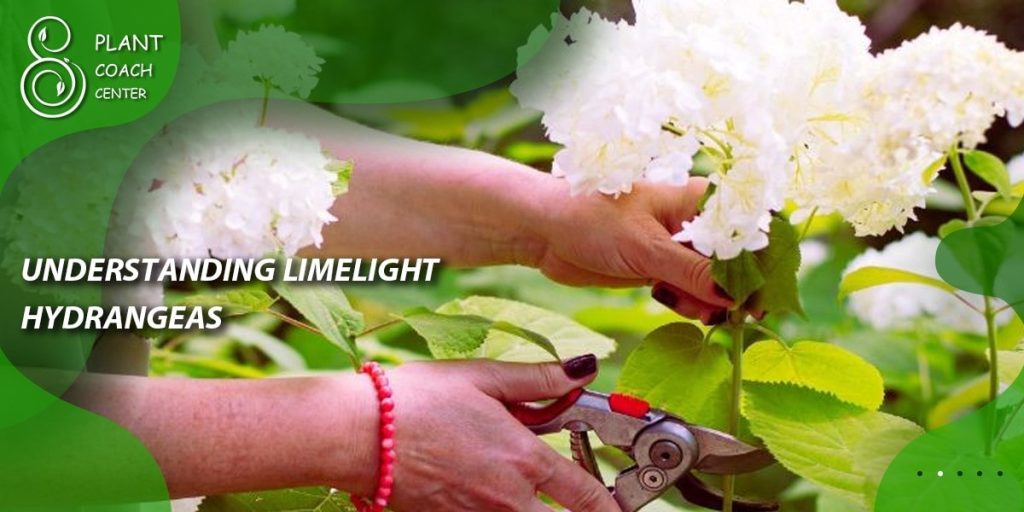
Understanding Limelight Hydrangeas
Limelight Hydrangeas (Hydrangea paniculata ‘Limelight’) are renowned for their magnificent cone-shaped flower clusters and their ability to thrive in various climates. These deciduous shrubs exhibit unique growth habits and require specific care, including timely pruning, to maintain their health and beauty. Before we dive into the art of pruning, let’s familiarize ourselves with the characteristics, flowering patterns, and cultivars of Limelight Hydrangeas.
Characteristics and Growth Habits
Limelight Hydrangeas are known for their vigorous growth and upright habits. Here are some key features of these stunning plants:
– Large, ovate leaves with serrated edges.
– Fast-growing shrubs that can reach a height and spread of 6 to 8 feet.
– Robust stems that support the weight of the flower clusters.
– Lime-green flowers that transition to creamy white as they mature.
– Late bloomers, usually flowering from mid-summer to early fall.
Flowering and Foliage Patterns
Understanding the flowering and foliage patterns of Limelight Hydrangeas is crucial for determining the appropriate time to prune. Here’s a closer look at their growth cycles:
– In spring, Limelight Hydrangeas produce new growth from dormant buds.
– Flower buds start forming in late spring and continue to develop throughout the summer.
– By mid-summer, the lime-green flower clusters begin to emerge and gradually change color.
– The flowers reach their peak in late summer, transforming into breathtaking shades of creamy white or pink.
– Foliage remains lush and green throughout the growing season, providing an attractive backdrop for the flowers.
Varieties and Cultivars
Limelight Hydrangeas offer a range of captivating varieties and cultivars to suit different preferences and gardening needs. Some popular ones include:
– ‘Limelight Prime’: A compact version of the original Limelight, perfect for smaller spaces or container gardening.
– ‘Little Lime’: A dwarf variety with similar features to Limelight but more suitable for compact gardens or front yards.
– ‘Phantom’: Known for its exceptionally large flower heads and strong stems, making it a showstopper in the garden.

The Science of Pruning Limelight Hydrangeas
Pruning Limelight Hydrangeas is both an art and a science. Understanding the growth cycles, pruning principles, and techniques will empower you to make informed decisions when it comes to enhancing the health and appearance of your plants.
Growth Cycles and Pruning Principles
Limelight Hydrangeas go through specific growth cycles, and pruning plays a vital role in maintaining their vitality. Here are some key principles to keep in mind:
- Timing: Pruning Limelight Hydrangeas at the right time is crucial. The general rule is to prune them after they have finished flowering, which is typically in late fall, winter, or early spring. This allows the plants to focus on new growth and flower production during the next season.
- Flowering on New Wood: Limelight Hydrangeas bloom on new wood, meaning the flower buds form on the current season’s growth. Pruning at the appropriate time ensures that you don’t inadvertently remove the flower buds and diminish the next year’s display.
- Shape and Size Control: Pruning allows you to shape and control the size of your Limelight Hydrangeas. Whether you prefer a compact shrub or a more open form, strategic pruning can help you achieve the desired shape and size.
Pruning Techniques for Optimal Health and Aesthetics
To ensure the health and aesthetics of your Limelight Hydrangeas, consider the following pruning techniques:
- Deadheading: Removing spent flower heads, also known as deadheading, helps redirect the plant’s energy towards new growth and encourages additional blooms. Cut the faded flower stems just above a pair of healthy buds or leaf nodes.
- Thinning: Thinning involves selectively removing some of the older or weaker branches to improve air circulation and light penetration within the plant. This technique helps prevent disease and promotes overall plant vigor.
- Renewal Pruning: Every few years, consider rejuvenation pruning to invigorate older or overgrown Limelight Hydrangeas. This involves cutting back the entire plant to about one-third of its height, removing old wood and stimulating the growth of fresh, vigorous stems.
Tools and Equipment for Pruning
Equipping yourself with the right tools will make pruning Limelight Hydrangeas easier and more effective. Here are some essential tools for the job:
– Hand Pruners: Use sharp bypass pruners for precise cuts on smaller branches and stems.
– Loppers: For thicker branches, loppers with long handles and bypass or anvil cutting mechanisms provide the necessary leverage and cutting power.
– Pruning Saw: A pruning saw with a curved blade is ideal for larger branches that are too thick for loppers.
– Gloves: Protect your hands with durable gardening gloves to prevent cuts and scratches while handling branches.
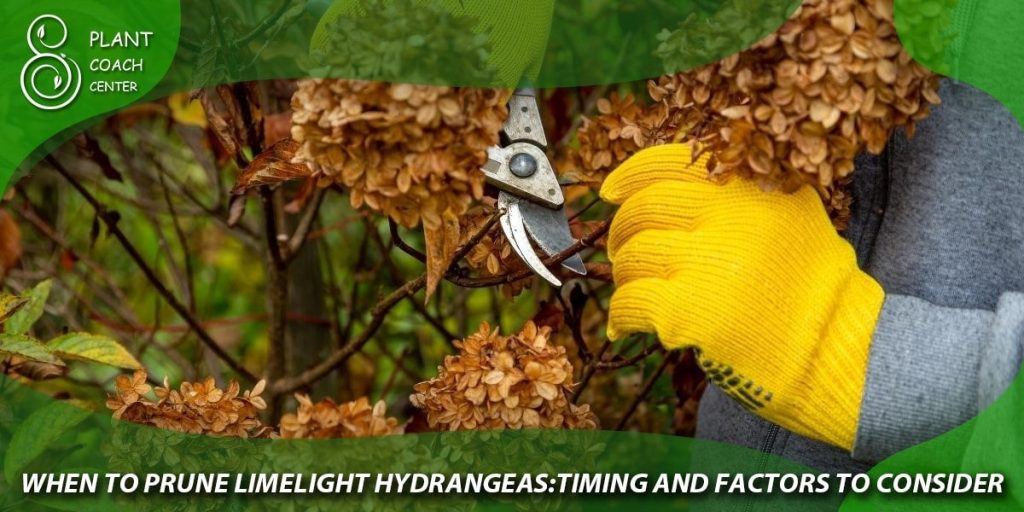
When to Prune Limelight Hydrangeas: Timing and Factors to Consider
Pruning Limelight Hydrangeas at the right time is essential for promoting healthy growth, maintaining shape, and maximizing flower production. Several factors come into play when determining the ideal timing for pruning. Let’s delve into these factors and gain a deeper understanding.
Pruning Based on Growth Phases and Flowering
Understanding the growth phases and flowering patterns of Limelight Hydrangeas is key to determining the optimal time for pruning. Consider the following guidelines:
- Post-Flowering Pruning: Limelight Hydrangeas should generally be pruned after their flowering period has ended. This typically occurs in late fall, winter, or early spring, depending on the specific climate and region. By pruning after flowering, you allow the plant to direct its energy towards new growth and flower production for the next season.
- Winter Pruning: In colder regions where winter temperatures are harsh, it’s advisable to postpone pruning until early spring. This helps protect the plant from potential frost damage that can occur after pruning.
- Early Spring Pruning: If you choose to prune in early spring, do so before new growth emerges. This allows you to have a clear view of the plant’s structure and removes any dead or damaged branches that may have occurred during the winter.
Climate and Regional Considerations
Climate plays a significant role in determining the timing of Limelight Hydrangea pruning. Consider the following regional factors:
- Frost-Sensitive Regions: In areas where late spring frosts are common, it’s best to delay pruning until after the frost danger has passed. Pruning too early in frost-sensitive regions can expose the plant to potential damage.
- Mild Climate Regions: In regions with milder climates, where frost is less of a concern, you can typically prune Limelight Hydrangeas in late fall or winter when the plant is dormant.
- Regional Variations: It’s important to note that specific regional variations can influence the timing of Limelight Hydrangea pruning. Local gardening resources, experienced gardeners, and horticultural extension services can provide valuable insights tailored to your specific area.
Overall Plant Health and Vigor
The condition and health of your Limelight Hydrangeas should also be taken into account when determining the pruning time. Consider the following factors:
- Disease or Pest Issues: If your plant is experiencing disease or pest problems, it’s advisable to address those issues before pruning. Pruning infected or infested branches may inadvertently spread the problem or weaken the plant further.
- Vigorous Growth: If your Limelight Hydrangeas are exhibiting robust growth and maintaining good health, it indicates that they are in a favorable condition for pruning. Healthy plants have a better capacity to recover from pruning and produce abundant blooms.
Pruning Techniques for Limelight Hydrangeas: Methods for Maintenance and Shaping
Pruning Limelight Hydrangeas requires careful attention to detail and the application of proper techniques. Whether you aim to maintain the plant’s health or shape it to your desired form, understanding the following pruning methods will help you achieve your goals effectively.
Maintenance Pruning
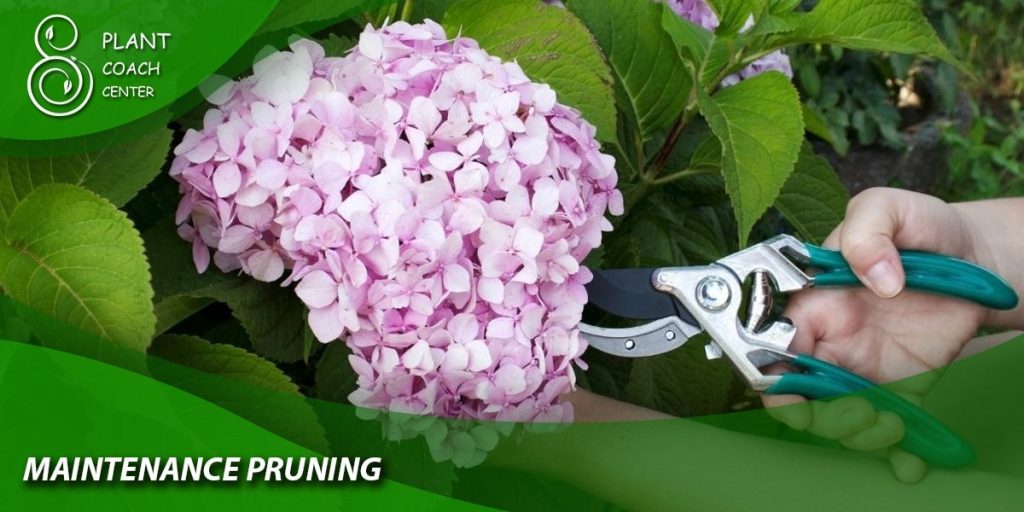
Maintenance pruning focuses on the regular care and upkeep of your Limelight Hydrangeas. The primary goals of maintenance pruning are to promote plant health, encourage new growth, and maintain an attractive shape. Consider the following techniques:
- Deadheading: As mentioned earlier, deadheading involves removing spent flower heads. This practice not only enhances the plant’s appearance but also redirects energy toward new growth and potential reblooming.
- Thinning: Thinning is especially beneficial for dense or overcrowded Limelight Hydrangeas. It involves selectively removing some older or weaker branches to improve air circulation and allow light to reach the inner parts of the plant. Thinning also reduces the risk of disease and promotes overall plant vigor.
- Cleaning: Cleaning involves the removal of dead, damaged, or diseased branches. Regularly inspect your Limelight Hydrangeas and prune out any unhealthy or non-productive wood. This helps maintain plant health and prevents the spread of diseases or pests.
Shaping and Size Control
Shaping and size control pruning techniques allow you to sculpt your Limelight Hydrangeas according to your preferences and garden design. These techniques help maintain a desirable form, control the overall size, and ensure a balanced appearance. Consider the following methods:
- Heading Back: Heading back is the process of selectively pruning branches to control the height and width of the plant. It involves cutting back the tips of branches, typically by one-third, to encourage lateral growth and a denser form.
- Rejuvenation Pruning: Rejuvenation pruning is a more drastic technique used to invigorate older or overgrown Limelight Hydrangeas. It involves cutting back the entire plant to approximately one-third of its height, removing old wood and stimulating the growth of fresh, vigorous stems. Rejuvenation pruning is typically done in early spring before new growth emerges.
- Espalier or Training: If you desire a specific shape or form for your Limelight Hydrangea, the espalier or training technique can be employed. This method involves carefully tying and training the branches to a supporting structure, such as a trellis or wire framework, to create a desired shape or pattern.
Pruning Best Practices
To ensure successful pruning outcomes, keep the following best practices in mind:
- Use Clean and Sharp Tools: Use clean and sharp pruning tools to make precise cuts. Dull or dirty tools can damage the branches and invite disease.
- Prune at the Right Angle: When making cuts, ensure they are at a slight angle, sloping away from the bud or node. This helps prevent water accumulation and promotes healing.
- Dispose of Pruned Material Properly: Remove and dispose of pruned branches and debris away from the base of the plant to minimize the risk of pests or diseases.
- Step Back and Assess: Periodically step back and assess the plant’s shape and symmetry as you prune. This allows you to make adjustments and ensure a balanced appearance.
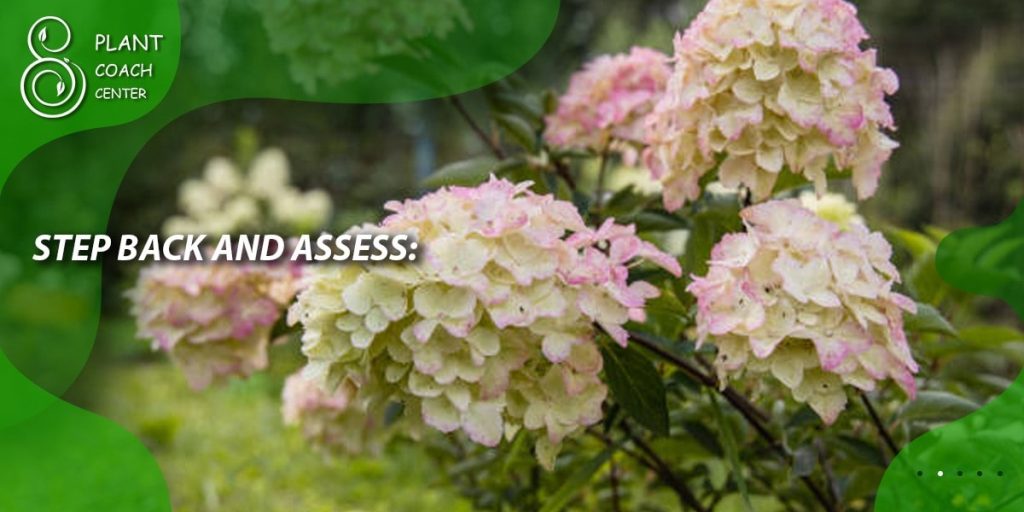
Conclusion
Pruning Limelight Hydrangeas is a rewarding endeavor that contributes to the overall health, appearance, and blooming potential of these beautiful shrubs. By understanding the growth cycles, timing, and techniques involved, you can confidently approach the pruning process.
Remember to consider factors such as regional climate, plant health, and desired outcomes when determining the optimal time for pruning. Whether you’re engaged in maintenance pruning or shaping your Limelight Hydrangeas, always prioritize the health and vitality of the plant. With proper care and attention, your Limelight Hydrangeas will thrive, delighting you with their spectacular blooms year after year.
plantcoachcenter.com hopes that this comprehensive guide on pruning Limelight Hydrangeas has provided you with valuable insights and practical knowledge to nurture your plants successfully.
When is the best time to prune Limelight Hydrangeas?
Late fall, winter, or early spring.
How do I promote more blooms on my Limelight Hydrangeas?
Deadhead faded flowers.
What should I do if my Limelight Hydrangeas are overcrowded?
Thin out older or weaker branches.
How can I control the size of my Limelight Hydrangeas?
Use heading back technique or rejuvenation pruning.


